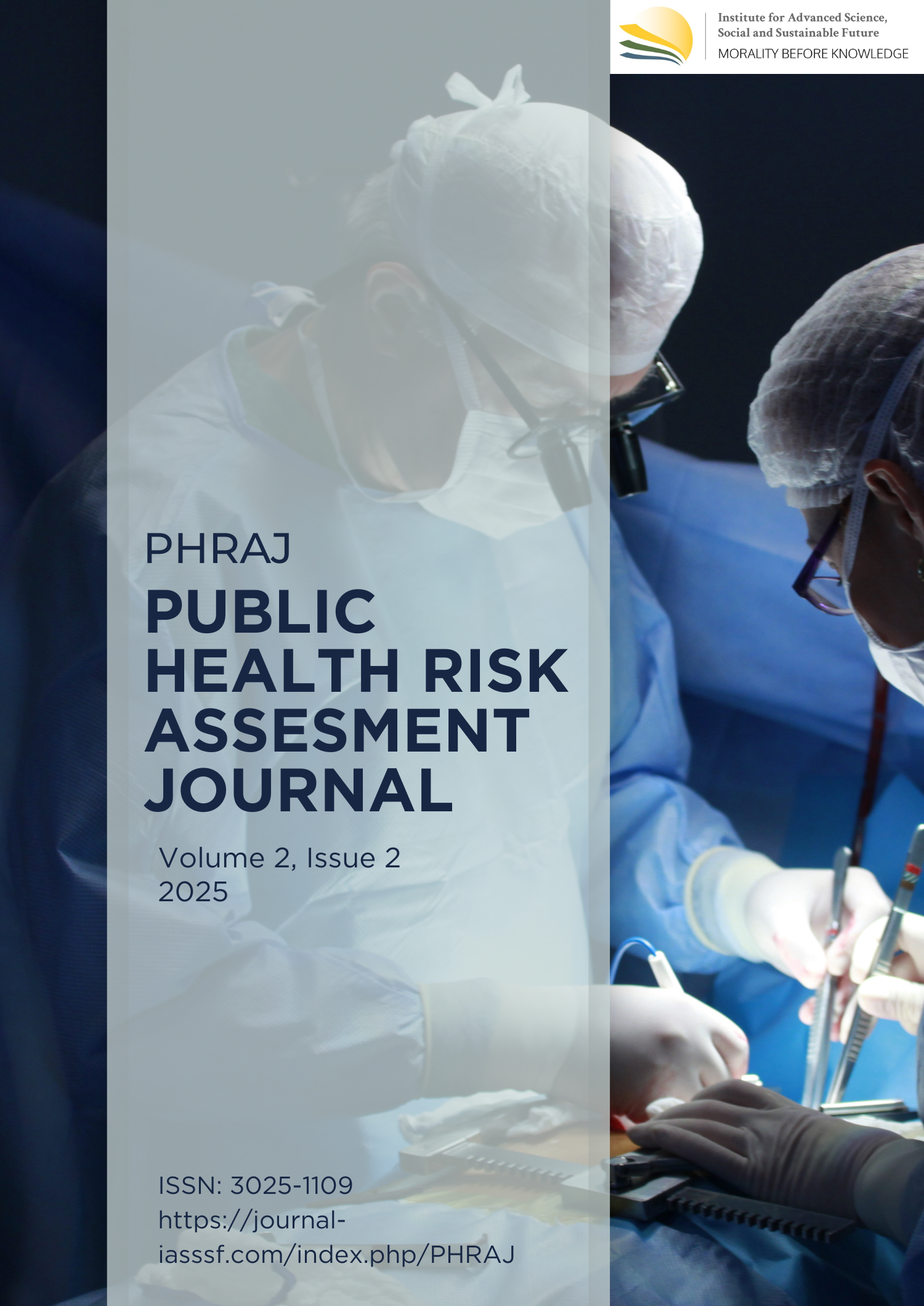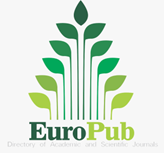SMANTUB (anti tuberculosis smartwatch) integrated with spy-TBC: Early strategy for Tuberculosis eradication based on smartwatch and Aiot-Posbindu-PM-TBC (artificial intelligence of things post for infectious Tuberculosis)
DOI:
https://doi.org/10.61511/phraj.v2i2.2025.1465Keywords:
smartwatch, tuberculosis, Spy-TBCAbstract
Background: Progress in efforts to eradicate TB or Indonesia free from TB 2030 should be continued and appreciated in order to move towards a more advanced and visionary future. There is still no special application to overcome TB cases in Indonesia based on AIoT or the internet). The aim of this research is to provide an idea to eradicated TB throught health also social care with advanced technology also innovation. Methods: This article uses a literature review method and presents an innovative approach for eradicating tuberculosis through the PDCA cycle. The focus is on setting goals for progress and creating strategies to reach them. The research proposes a new innovation, Smantub, combined with technology to decrease TB cases. Findings: The "Smantub" smartwatch, integrated with Spy-TBC technology and powered by AIoT, is a cutting-edge tool for early prevention and management of tuberculosis (TB) in Indonesia. By utilizing Big Data, WebApp, and location tracking, as well as AIoT-Posbindu-PM-TBC, it can play a crucial role in reducing TB prevalence, which remains high in the country. The Smantub smartwatch aims to address health threats, prevent deaths, and control the spread of TB. With this innovative technology, Indonesia can work toward becoming TB-free by 2030, supported by the efforts of Jejamoe Café. Conclusion: Smartwatch “Smantub” can be used as a cutting-edge tool or technology in early and mature prevention efforts to reduce the prevalence of TB which is currently still high in Indonesia. Novelty/Originality of this article: Smantub helps overcome the problem of TB, especially in controlling the location of sufferers and controlling the prevention of transmission.
References
Asemahagn, M. A., Alene, G. D., & Yimer, S. A. (2020). A qualitative insight into barriers to tuberculosis case detection in east gojjam zone, Ethiopia. American Journal of Tropical Medicine and Hygiene, 103(4), 1455–1465. https://doi.org/10.4269/ajtmh.20-0050
Asres, A., Jerene, D., Deressa, W. (2018). Pre- and post-diagnosis costs of tuberculosis to patients on directly observed treatment short course in districts of southwestern Ethiopia: a longitudinal study. Journal of Health, Population and Nutrition, 37(1), 1–11. https://doi.org/10.1186/s41043-018-0146-0
Gautama, B. H., Hgaanif, R., & Maretaniandini, S. T. (2023). Fraud Early Warning System: Identifikasi Potensi Fraud dalam Pelaporan Harta Kekayaan Penyelenggara Negara Berbasis Big Data. Innovative: Journal Of Social Science Research, 3(4), 3117–3131. Retrieved from https://j-innovative.org/index.php/Innovative/article/view/3779.
Gupta R. K., Lucas S. B., Fielding K. L., Lawn S. D. (2015). Prevalence of tuberculosis in post-mortem studies of HIV-infected adults and children in resource-limited settings: a systematic review and meta-analysis. AIDS. 29(15). 1987–2002. https://doi.org/10.1097/qad.0000000000000802
Gupta-Wright, A., Fielding, K., Wilson, D., van Oosterhout, J. J., Grint, D., Mwandumba, H. C., Alufandika-Moyo, M., Peters, J. A., Chiume, L., & Lawn, S. D. (2020). Tuberculosis in hospitalized patients with human immunodeficiency virus: clinical characteristics, mortality, and implications from the rapid urine-based screening for tuberculosis to reduce AIDS related mortality in hospitalized patients in Africa. Clinical Infectious Diseases, 71(10), 2618–2626. https://doi.org/10.1093/cid/ciz1133.
Haryanto, D., & Saputra Elsi, Z. R. (2021). Analisis Performance Progressive Web Apps Pada Aplikasi Shopee. Jurnal Ilmiah Informatika Global, 12(2). https://doi.org/10.36982/jiig.v12i2.1944.
Islami, D. N., & Pratiwi, F. H. (2023). Analisis Hukum Tentang “Beban” Dalam Program Penyaluran Bantuan Sosial Di Dinas Sosial Kabupaten Semarang. Journal of Indonesian Comparative of Syari'ah Law, 6(2), 277-294. https://doi.org/10.21111/jicl.v6i2.11125.
Kenedyanti, E., dan Sulistyorini, L. . (2017). Analisis Mycobacterium Tuberculosis dan Kondisi Fisik Rumah Dengan Kejadian Tuberkulosis Paru. Jurnal Berkala Epidemiologi. 5(2) 152-162. https://www.academia.edu/download/92110332/3881.pdf.
Lubis, E. M. (2021). Kendala Pelaksanaan Program Pos Pembinaan Terpadu Penyakit Tidak Menular (POSBINDU PTM): Literatur Review. Journal Transformation of Mandalika, 2(3), 43-71. https://ojs.cahayamandalika.com/index.php/jtm/article/view/683.
Mardianto, R. (2023). Kepatuhan Minum Obat Mempengaruhi Kualitas Hidup Pasien TBC di Puskesmas Kota Malang. Jurnal Penelitian Kesehatan Suara Forikes, 14 (4), 736-739. http://dx.doi.org/10.33846/sf14415.
Musyafa, A. (2017). Tuberculosis: Case Finding in Public Health Center of Blora, Indonesia. Berita Kedokteran Masyarakat UGM, 33(11). https://doi.org/10.22146/bkm.37572
Mualim, W., & Putra, G. U. (2017). Implementasi Framework Mvc Pada Sistem Informasi Akademik Di Stmik Yadika Bangil. Jurnal SPIRIT, 9(2), 35–39. https://jurnal.stmik-yadika.ac.id/index.php/spirit/article/view/83/13.
Petheram, C., & Mcmahon, T. (2019). Dams, dam costs and damnable cost overruns. Journal of Hydrology X, 3. http://dx.doi.org/10.1016/j.hydroa.2019.100026
Sari, I.D., Herman, M.J., Susyanty, A.L. & Su’udi, A. (2018). Analisis Biaya Tuberkulosis Paru Kategori Satu Pasien Dewasa di Rumah Sakit di DKI Jakarta. Jurnal Kefarmasian Indonesia, 8(1), 44-54. https://www.jkefarind.com/index.php/jki/article/view/3718/1795.
Setyandari, T. ., & Setiyadi, N. A. . (2023). Studi Kasus Tuberkolosis Anak di Wilayah Kerja Puskesmas Nguter Sukoharjo. Jurnal Review Pendidikan Dan Pengajaran (JRPP), 6(4), 1602–1609. https://journal.universitaspahlawan.ac.id/index.php/jrpp/article/download/21144/15092.
Sommerland, N., Wouters, E., Mitchell, E. M. H., Ngicho, M., Redwood, L., Masquillier, C., van Hoorn, R., van den Hof, S., van Rie, A. (2017). Evidence-based interventions to reduce tuberculosis stigma: a systematic review. The International Journal of Tuberculosis and Lung Disease, 21(11). http://dx.doi.org/10.5588/ijtld.16.0788
Stracker, N., Hanrahan, C., Mmolawa, L., Nonyane, B., Tampi, R., Tucker, A., West, N., Lebina, L., Martinson, N., Dowdy, D. (2019). Risk factors for catastrophic costs associated with tuberculosis in rural South Africa. The International Journal of Tuberculosis and Lung Disease, 23(6), 756–63. https://doi.org/10.5588/ijtld.18.0519
Tandel, S. S., & Jamadar, A. (2018). Impact of Progressive Web Apps on Web App Development. International Journal of Innovative Research in Science, Engineering and Technology, 7(9). http://dx.doi.org/10.15680/IJIRSET.2018.0709021
Tanwir, S. S., Huda, A. S., Latif, A., Syafi’i, A., & Aulady, M. F. N. (2024). Improving occupational health and safety discipline for accident prevention through the implementation of the 5-S practice. Asian Journal of Toxicology, Environmental, and Occupational Health, 1(2), 45-52. https://doi.org/10.61511/ajteoh.v1i2.2024.317.
Yusrina, K. M., Maharani, M., Ula Aliffah, N., & Ratmaningsih, N. (2024). Budaya Korupsi: Ketimpangan Sosial Ekonomi Antar Pejabat Negara dan Masyarakat Akibat Pandemi. Jurnal Sosial Dan Sains, 3(12), 1328–1337. https://doi.org/10.59188/jurnalsosains.v3i12.1158.
Zawedde-Muyanja, S., Manabe, Y. C., Cattamanchi, A., Castelnuovo, B., & Katamba, A. (2022). Patient and health system level barriers to and facilitators for tuberculosis treatment initiation in Uganda: a qualitative study. BMC Health Services Research, 22(1), 1-14. https://link.springer.com/article/10.1186/s12913-022-08213-w.
Downloads
Published
How to Cite
Issue
Section
Citation Check
License
Copyright (c) 2025 Hasto Yuwono

This work is licensed under a Creative Commons Attribution 4.0 International License.















